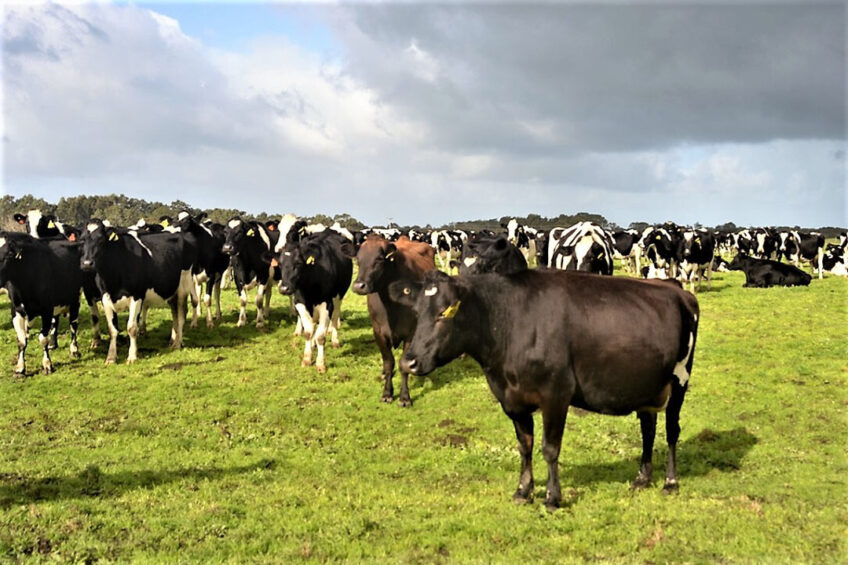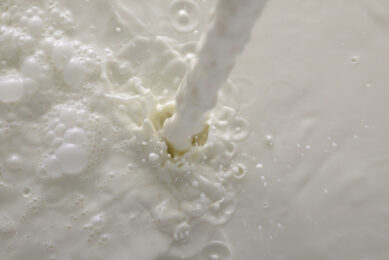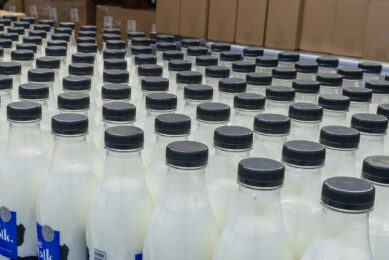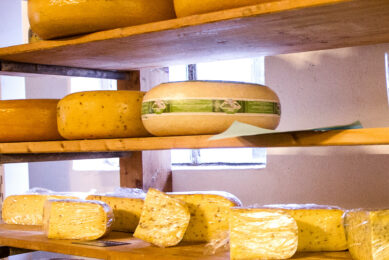Australia: How farmers are transforming

Australia is the fourth largest dairy exporter in the world. It exports roughly one third of milk produced each year, but how is this sector transforming to combat climate change and how has it fared locally and in global markets in recent years? We have some insights…
Total milk production in Australia is forecast to increase by 2% in 2020–21 to 9 billion litres, according to the Australian Bureau of Agricultural and Resource Economics and Sciences. Improved seasonal conditions, and low hay and grain prices, have led to higher retention and restocking of cows despite the highest cull cow prices for 5 years.

On average, Australians drink 97 litres of milk per person per year. They eat about 13.6 kilogrammes of cheese per capita. The annual consumption of butter in Australia is about 4kg per person per year and Australians consume about 9.5kg of yoghurt per capita.
Australia currently has a 5% share of world dairy trade behind New Zealand, the European Union, and the United States. Dairy Australia estimates that in recent years, Australia has exported close to 30%–40% of its milk production. The share of Australian milk exported has reduced following a decline in overall milk production and a larger domestic market due to population growth.
In 2019–20, the total value of Australian exports was around A$ 3.4 billion (US$ 2.59 billion). Australia accounts for less than 2% of the world’s estimated milk production but remains a significant exporter of dairy products.
Greater China (including China, Hong Kong, and Macau) is Australia’s largest dairy export market, accounting for 32% of exports by volume. But Japan remains a vital trade partner for Australian exporters as well. Australian dairy exports to Asia account for more than 87% of total exports.
Dairy product markets
Dairy Global offers readers access to the futures market a clear overview of prices for: raw milk, dry whey, skimmed milk powder, cheese, and butter. Stay up to date…
Greenhouse gas emissions
Asian markets have considerable potential for consumption growth as incomes rise and diets become more ‘westernised’, Dairy Australia points out. Australian dairy companies also have proven track records in supplying these markets over several decades. Australia’s top-5 export markets by value in 2019–20 were: Greater China, Japan, Indonesia, Malaysia, and Singapore.
The Australian dairy industry has made a commitment to reduce greenhouse gas emissions intensity by 30% across the whole industry by 2030 (from a 2015 baseline). Dairy Australia says that agriculture accounts for approximately 13% of Australia’s total greenhouse gases. Emissions from the dairy industry represent 12.5% of this, which is 1.63% of total Australian greenhouse emissions.
The Dairy Industry Sustainability Framework is a guide to sustainable dairy production in Australia. The goals and targets in this framework are set for 2030. Over the next few years, assisted by tools, research, and services from Dairy Australia, Australian dairy farmers and manufacturers will continue to make progress on sustainability, according to the framework.
Sustainable dairy farming, the bigger picture
If you were to describe the future of agriculture in one word, what would that word be? Many would choose the word ‘sustainable’. The global consumer-lead sustainability movement has brought real changes in science, practice, and policy, but what does it mean for the dairy nutritionist?
Trial to reduce emissions
Australian dairy farmers will stop tail docking, invest more in renewable energy, end deforestation, reduce greenhouse gas emissions, and have water security risk management plans. Increasingly, they will implement biodiversity action plans, exclude stock from waterways, increase water-use efficiency and water recycling, and reduce their use of antibiotics in animals.
Dairy manufacturers will ensure 100% of their packaging is recyclable, compostable, or reusable, divert more waste from landfill, and reduce the intensity of greenhouse gas emissions and water consumption.
The greatest impact on greenhouse gas emissions from the dairy sector is from farms and specifically animal methane emissions. Recently, there has been a lot of interest in the possibilities of a certain seaweed. Research conducted in by the CSIRO, the James Cook University and Meat and Livestock Australia has identified asparagopsis as an effective feed supplement to reduce emissions. It may also support production.

Dairy giant Fonterra has started a trial on Tasmania to find out if this seaweed can really help to reduce emissions. The company that produces the seaweed, Sydney based Sea Forest, has received a AUS $ 1 million (US$ 760 million) federal government grant to accelerate its commercial production of asparagopsis.
Dairy giant Fonterra starts trial with seaweed
Dairy giant Fonterra is partnering with Australian company Sea Forest to see if using seaweed in cows’ feed can reduce emissions from commercial dairy herds. The trial will use Asparagopsis, a seaweed grown naturally in Australia and New Zealand, as a supplement feed for herds in Tasmania during the coming milk season.
Less pasture production
But Australian dairy farmers will also have to adapt in other ways. According to the University of Melbourne, 20 years from now, dairy farming will look and feel different. By 2040, farmers will have to deal with warmer temperatures and more extreme weather events, while more variable rainfall will see seasons shift and feeding strategies altered. Summers will extend well beyond the usual summer period and dry spells will last longer.
This forecast change has prompted a team of researchers at the University of Melbourne’s Primary Industries Climate Challenges Centre and Dairy Australia to apply climate modelling to specific farms to analyse how key Australian dairy regions might perform in the future.
“The modelling allowed us to predict some critical indicators of farm performance, covering everything from future climatic conditions to pasture growth, milk production and farm profits,” researcher Dr Brendan Cullen of the Faculty of Veterinary and Agricultural Sciences says.
Most significantly, we‘ll see a shift in the pasture growing season. Growth rates will be higher in winter and early spring but lower for the rest of the year. Overall, this means less pasture production and that will create a real feed challenge. Farmers will need to adapt. They might buy in more feed or alter stocking rates and calving times.”
Shift to smaller herds
Using 3 farms in Victoria’s Gippsland region, South Australia’s Fleurieu Peninsula, and north-west Tasmania, researchers applied climate, biophysical and economic models to develop projections for each farm system. Dr Cullen and researcher Dr Margaret Ayre, from the University of Melbourne, worked alongside scientists from the Tasmanian Institute of Agriculture, economists, farm consultants, and farmers from the 3 regions to develop a comprehensive picture of how each farm might perform.
One critical finding was that climate change had a negative effect on the profitability of each farm regardless of the development option, largely because higher temperatures and longer dry spells reduced pasture utilisation. Across the 3 case study farms, the research identified a loss of operating profit of 10-30% due to climate change in 2040 if farmers did not adapt to the warmer and drier climates.
The Australian dairy industry has been on a long-term trend of intensification, but Dr Cullen says the simpler, less intensified systems tested are realistic alternatives under future climates.
For dryland dairy farms, we found a less-intensified system had similar average levels of profitability but were less risky compared to more intensive systems.”
This would mean a possible shift to smaller herds, less grain feeding, more off farm agistment or lower stocking rate – the reverse of what has happened in past decades.
“Dairy farming can certainly continue to be viable into the future,” Dr Cullen says. “But the project has clearly identified that there is a need for the industry and farmers to continue to adapt to changing climatic conditions in order to remain profitable.”
Join 13,000+ subscribers
Subscribe to our newsletter to stay updated about all the need-to-know content in the dairy sector, two times a week.










